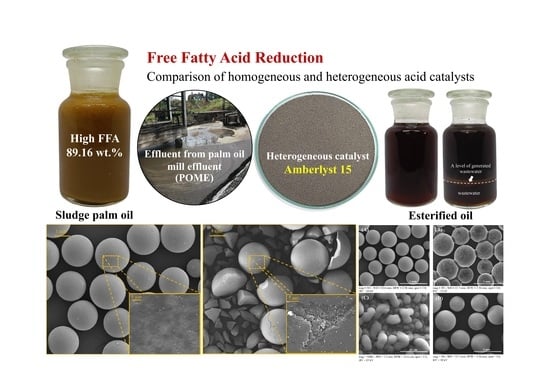Have you ever wondered about the true nature of motor oil? Is it a smooth blend or a mix of distinct parts?
Understanding whether motor oil is homogeneous or heterogeneous can impact how you maintain your vehicle and extend its lifespan. We’ll dive into the world of motor oil, breaking down its composition in simple terms. You’ll discover how this knowledge can empower your decisions and keep your engine running smoothly.
So, stick around, because what you’ll learn might just change the way you think about your car’s lifeblood.

Credit: sersol.weebly.com
Characteristics Of Motor Oil
Motor oil is a homogeneous mixture, meaning it has a uniform composition throughout. This consistency ensures even distribution of additives and base oils. Homogeneous properties allow for efficient engine lubrication and protection.
Motor oil is vital for engine health. It lubricates and cools engine parts. Understanding its characteristics helps choose the right oil. Different oils suit different engines and conditions. Knowing about its composition and properties provides insight into its performance.Composition And Ingredients
Motor oil is a mix of base oils and additives. Base oils make up most of the motor oil. They can be mineral, synthetic, or a blend. Additives enhance the oil’s performance. They prevent corrosion, reduce wear, and clean engine parts. Some additives improve viscosity or thermal stability. The composition influences the oil’s behavior in the engine.Physical Properties
Motor oil’s physical properties are essential for engine efficiency. Viscosity measures the oil’s thickness and flow ability. It affects lubrication and protection levels. High viscosity oils are thicker and flow slower. Low viscosity oils are thinner and flow easily. Temperature impacts the oil’s viscosity. Cold engines need thinner oil for quick flow. Hot engines need thicker oil for protection. Motor oil color can indicate its condition. Fresh oil is usually amber or golden. Dark oil might mean it’s dirty or old. The oil’s smell can also hint at its state. A burnt smell might signal engine issues. Understanding these properties helps maintain engine health.Homogeneous Mixtures
Understanding homogeneous mixtures is essential in chemistry and industry. These mixtures have uniform composition throughout. Every part of the mixture looks the same. Motor oil is a perfect example. Let’s explore its definition and role in industry.
Definition And Examples
Homogeneous mixtures are consistent in appearance and properties. They combine substances evenly. You can’t see individual components with the naked eye. Common examples include air and saline solution. Motor oil is another example. It blends various additives and base oils into one fluid. This ensures consistent performance. The mixture remains stable under different conditions. Homogeneous mixtures like motor oil are vital in many applications.
Role In Industry
Homogeneous mixtures play a big role in industry. Motor oil lubricates engine parts efficiently. Its uniform composition prevents wear and tear. This extends engine life. Industries rely on motor oil for smooth operation. It ensures machines run without interruption. Homogeneous mixtures are crucial for product consistency. They help maintain quality standards. Industries use these mixtures for precision. Motor oil also contributes to energy savings. Its efficient performance reduces fuel consumption. Homogeneous mixtures are indispensable in various industrial processes.
Heterogeneous Mixtures
Motor oil is a heterogeneous mixture, containing different components that don’t completely blend. This mix includes additives and base oils. Each part retains its properties, making motor oil a varied substance.
Understanding whether a substance is homogeneous or heterogeneous can impact how you use it. Motor oil, a common household item, often sparks this curiosity. Let’s dive into the fascinating world of heterogeneous mixtures and see how they apply to motor oil.Definition And Examples
Heterogeneous mixtures consist of distinct components that remain separate, rather than blending into a single uniform substance. Think of a salad where you can see the lettuce, tomatoes, and cucumbers separately. Motor oil sometimes contains additives, which can lead to a heterogeneous mixture. These additives might settle over time, making it crucial to shake the container before use. Another classic example is oil mixed with water. The two liquids don’t dissolve in one another, showcasing a clear separation.Applications In Industry
Heterogeneous mixtures play a significant role in various industries. In the automotive sector, understanding these mixtures can enhance product performance. Motor oil manufacturers might intentionally create heterogeneous mixtures. This allows for targeted performance enhancements, such as improved viscosity or temperature resistance. You might wonder how this affects your car. Well, using a motor oil with the right additives can improve your vehicle’s efficiency and longevity. In the food industry, emulsions like mayonnaise are another form of a heterogeneous mixture. The oil and water are forced to mix temporarily, similar to how additives work in motor oil. So, why should you care about these mixtures? Recognizing them ensures you use products effectively, maximizing their benefits. Have you considered how often you rely on these mixtures in your daily life?
Credit: thermtest.com
Analyzing Motor Oil
Motor oil plays a crucial role in engine performance. Understanding its composition is essential. Is it homogeneous or heterogeneous? This question impacts its effectiveness. Analyzing motor oil helps in making this determination. By examining its properties, we gain insights into its consistency. This analysis ensures optimal engine care and longevity.
Methods Of Analysis
Several methods analyze motor oil’s composition. Physical observation is a basic approach. It involves visually inspecting the oil for uniformity. Chemical analysis provides a deeper insight. It identifies the components within the oil. Techniques like spectroscopy are often used. They help in determining the molecular structure. Regular testing ensures the oil maintains its quality.
Common Observations
Motor oil often appears uniform. It looks consistent throughout. This suggests a homogeneous mixture. Yet, under detailed analysis, variations can appear. These variations reveal a heterogeneous nature. Impurities or additives might cause this. Observations help in understanding oil’s true nature. Regular checks prevent engine damage and ensure efficiency.
Factors Affecting Motor Oil Composition
Motor oil serves as the lifeblood of any vehicle’s engine. Its composition plays a crucial role in ensuring engine efficiency and longevity. Understanding the factors that affect motor oil composition helps in making informed decisions about oil selection.
Manufacturing Process
The manufacturing process determines the base oil quality. High-quality base oils ensure better engine performance. Additives enhance the oil’s properties, increasing its efficiency. Refining techniques also impact the final product’s stability. Advanced refining methods lead to purer oils.
Environmental Influences
Environmental conditions can alter motor oil composition. Extreme temperatures affect oil viscosity. Cold weather can thicken oil, reducing flow. In contrast, heat can thin it, affecting lubrication. Dust and contaminants can mix with oil, impacting its performance. Regular maintenance helps combat these effects.
Scientific Perspectives
Motor oil is a homogeneous mixture. Its uniform composition ensures consistent performance in engines. The blend of base oils and additives provides stability and efficiency.
When you pop the hood of your car, have you ever wondered about the science behind motor oil? Is it a simple uniform substance, or does it have hidden complexities? Understanding whether motor oil is homogeneous or heterogeneous can help you make informed decisions about your vehicle maintenance. Let’s dive into the scientific perspectives.Expert Opinions
Experts in the field of chemistry often classify motor oil as a homogeneous mixture. This means the components are evenly distributed throughout the oil. Picture a well-mixed smoothie; you can’t see the individual ingredients, but they work together for a smooth ride. However, some professionals argue that motor oil can become heterogeneous over time. Imagine pouring in additives or experiencing wear and tear. Does this create pockets of differing composition? Experts suggest regular oil changes to maintain uniformity. What do you think? Is your motor oil a smoothie or a layered parfait?Research Studies
Numerous studies have explored the composition of motor oil, revealing fascinating insights. Researchers have found that over time, motor oil can indeed develop heterogeneous characteristics. Contaminants, such as dirt and metal particles, can alter its uniformity. One study highlighted the importance of oil filtration systems. They play a crucial role in maintaining the homogeneity of motor oil by removing impurities. Think of it as a strainer for your smoothie, ensuring each sip remains consistent. Consider how often you change your oil. Are you helping your engine stay smooth and efficient? Understanding these scientific perspectives gives you a clearer picture of motor oil’s nature. Whether homogeneous or heterogeneous, the key is proactive maintenance. Your vehicle’s performance depends on it.Implications For Consumers
Understanding whether motor oil is homogeneous or heterogeneous is crucial. It impacts how consumers experience performance and maintenance. This knowledge aids informed choices about oil types. It also helps maintain vehicle efficiency and longevity.
Performance Considerations
Homogeneous motor oil offers consistent performance. It provides even lubrication throughout the engine. This ensures smooth operation and reduces wear. Heterogeneous oil may contain varying elements. These can affect lubrication quality. It might lead to inconsistent engine performance. Consumers must consider oil type for optimal vehicle functioning.
Maintenance Tips
Regular oil changes are vital. They ensure the engine remains clean. Homogeneous oil can simplify this process. It is easier to replace and manage. Heterogeneous oil requires more attention. It may need specific handling due to varying components. Checking oil quality before use is essential. This ensures the engine receives suitable protection.

Credit: www.mdpi.com
Conclusion
Understanding motor oil’s nature aids in better maintenance decisions. Motor oil can be homogeneous or heterogeneous. Homogeneous oil is consistent, while heterogeneous oil contains different elements. This distinction matters for vehicle performance. Choosing the right type ensures engine efficiency. Always check your oil’s properties.
It helps in maintaining your vehicle’s health. Regular oil checks prevent engine issues. Keep your engine running smoothly. Use the right oil type for your car’s needs. It’s a simple step for long-term benefits. Remember, a well-informed decision prolongs your vehicle’s life.
